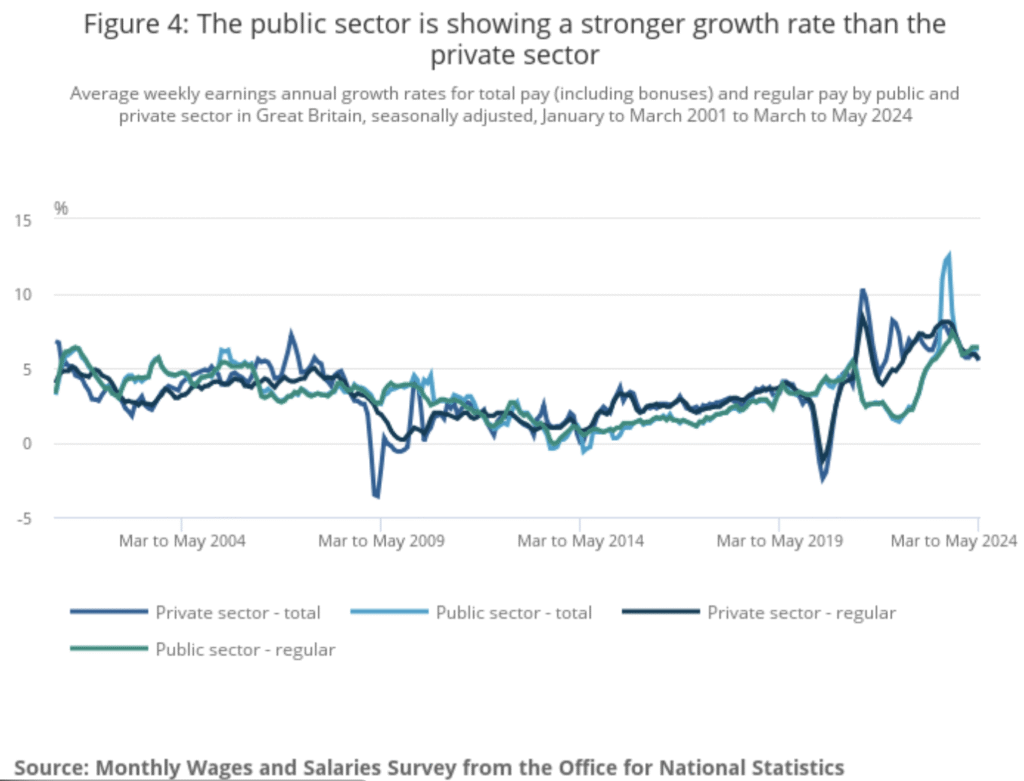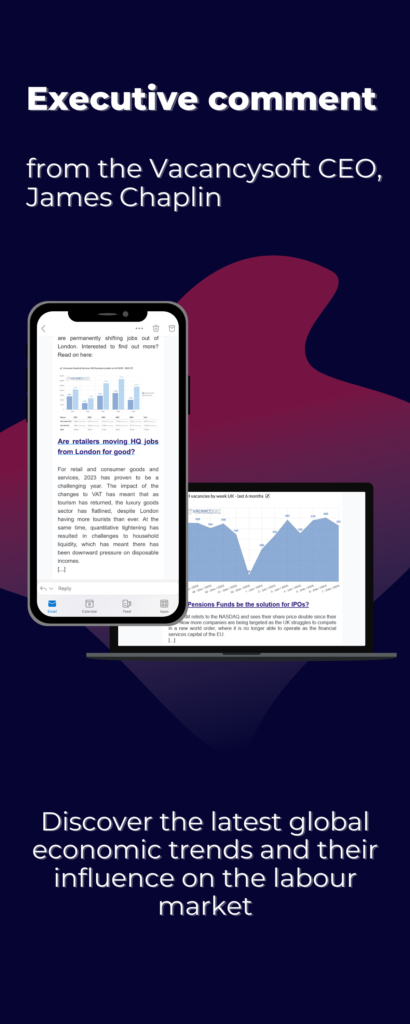Private Sector Pulls Ahead While Public Sector Lags
Why is productivity diverging between the Public & Private Sectors?

The latest data from the Office for National Statistics (ONS) for June to August 2025 reveals a widening gap in pay growth between the private and public sectors. Regular pay in the public sector, excluding bonuses, rose by 6.0% year-on-year, compared with a 4.4% increase in the private sector. Meanwhile, inflation, as measured by the Consumer Prices Index (CPI), remained steady at 3.8% in both July and August, slightly up from 3.6% in June.
Economists caution that when wage growth outstrips productivity, it can fuel inflationary pressures. Rising costs prompt businesses to raise prices, which in turn leads workers to demand higher wages to maintain their standard of living. Without corresponding gains in economic output, this cycle risks entrenching higher inflation while leaving real wages largely unchanged.
The UK’s current wage dynamics are occurring against a backdrop of declining productivity, particularly in the public sector. An analysis by EY in August 2025 estimates that the growing productivity gap between the public and private sectors is costing the economy around £80 billion annually. Since 2019, private sector productivity has risen by more than 3%, while public sector output remains nearly 5% below its pre-pandemic peak. Other reports suggest an even steeper decline: a 2024 study indicated public sector productivity was 6.4% below its Q4 2019 level.
This divergence is increasingly evident in the adoption of automation. Facing rising labour costs and inflationary pressures, UK firms are turning to artificial intelligence and robotics to bolster efficiency. In banking, Barclays has deployed the AI chatbot Clyde to manage routine customer queries, allowing human staff to focus on complex tasks. Retailer Tesco has invested in automated cold storage and self-scanning technology under its “Save to Invest” programme, projected to save £500 million by February 2025. Shipping giant Maersk is trialling autonomous robots from Dexory to streamline warehouse inventory management.
Indeed, across sectors, companies are seeking ways to enhance productivity, a trend arguably accelerated by current government policies. These themes will be explored at the upcoming AI Disruption Forum on 13 November.
For those interested in the intersection of automation and business productivity, registration remains open, though spaces are limited.
Subscribe to our weekly newsletter for clear, timely insights on the political and economic trends shaping the UK labour market:
The data referenced above has been sourced from Vacancy Analytics, a cutting-edge Business Intelligence tool that tracks recruitment industry trends and identifies emerging hotspots. With 17 years of experience, we have a deep understanding of market activities in the UK and globally.
Want to unlock the full potential of Vacancy Analytics to fuel your business growth?
Book a 30-minute workshop with us and discover the power of data in shaping the future of your market!
p.s. By the way, if you are a fantasy football fan, why not join our league this season? With over 50 people already registered, we will be doing prizes for the winner and for the manager of the month if we hit 100+. Get involved!


